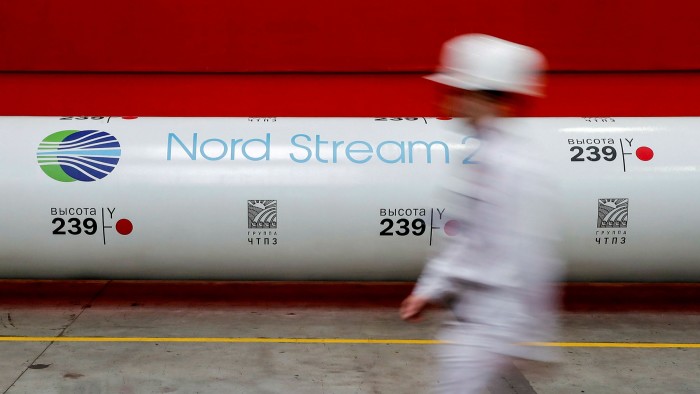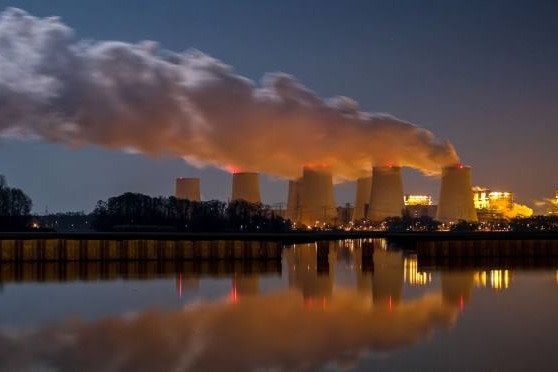Surging gas prices likely to reverse course

Roula Khalaf, Editor of the FT, selects her favourite stories in this weekly newsletter.
The writer is a senior research fellow at the Oxford Institute for Energy Studies
The natural gas market has entered daunting new territory. Prices have risen to historic highs for a sustained period. Gas prices in Europe and Asia are now almost double the price of oil for the equivalent energy.
For some, this is a breakthrough moment in the global gas market, a preview of things to come as the energy transition accelerates and demand shifts from dirtier fossil fuels.
But a more probable analysis is that the current prices may simply reflect a competitive market responding to an unusual confluence of economic forces. In the near future, a sharp correction is likely.
Certainly prices are high. Since the development of a trading point for gas in the UK in 1996, there has been only one month (January 2006), where the monthly settlement price has been above 100p per therm. The settlement price for this month was 111p per therm and for October it will be even higher at 170p per therm.
The causes of such a surge have been well documented. Cold weather in early 2021 led to a spike in demand in Asia while lower hydroelectricity production in South America pulled liquefied natural gas cargoes away from Europe.
To make matters worse, numerous issues at LNG export plants relating to lack of fuel and technical problems constrained supplies. At the same time, there was lower European gas production in part due to delayed maintenance because of the pandemic. Alongside weaker than expected pipeline imports from Russia and a boost in demand following a drop in wind power, this all further impeded Europe’s ability to refill its depleted stocks.
The simultaneous nature of these events is a stark reminder that gas prices in the UK and Europe are part of a global picture. Higher UK gas production or more gas storage would not have made any real difference. Indeed, in this interconnected global market, what happens to gas demand in Beijing, Bangkok and Bangalore impacts UK gas prices just as much, if not more than demand trends in Brighton, Birmingham and Bolton.
As we enter winter with already record high gas prices, markets await a looming energy crisis. But arguably, wholesale gas prices already include a “fear” premium, pricing in expectations that this year’s winter will be much like last year: a long cold winter.
The winter of 2020-2021 was colder than average over the past 40 years in Europe, Russia, and north-east Asia. With this in mind, LNG buyers (primarily in Asia) are already stocking up, fearing a repeat of last year when they were caught unprepared. This is keeping prices up and pulling cargoes away from Europe as it seeks to replenish stocks.
However, European storage is still filling at a steady rate. If this continues well into October, then even a winter as cold as the last could well be accommodated. That said, from the current pricing point, a short and sharp drop in temperatures this winter (akin to ‘The Beast from the East’ weather pattern seen in the UK in 2018) would probably see prices spike briefly.
But it would take a longer and colder winter than last year to see a sustained rise in prices above current levels. Higher gas prices, in turn, would force large end users in industry and power to switch away from gas, while some industries would need to shut down for a period of time.
But there is also another scenario. A milder winter would allow European buyers to further replenish stocks and better withstand any potential cold spells in January and February. And if a cold snap does not come, we could expect gas prices to fall.
As we move into 2022, some of the one-off demand increases in South America and north-east Asia are unlikely to repeat themselves, even as China’s appetite for gas continues to grow.
Twice weekly newsletter

Energy is the world’s indispensable business and Energy Source is its newsletter. Every Tuesday and Thursday, direct to your inbox, Energy Source brings you essential news, forward-thinking analysis and insider intelligence. Sign up here.
Some of the LNG supply issues are already beginning to ease and there are new plants expected to start up in the US. Flows from Russia through the Nordstream 2 pipeline are also expected to start later in 2022. They will not help in a very early cold winter, but they should help to cool prices later in 2022.
The range of uncertainty surrounding gas prices over the next 12 months has probably never been wider, but the circumstances have been and remain extraordinary. In 2020, pandemic responses reduced gas demand almost everywhere (except China) while supplies continued to rise in an already oversupplied market.
This year has been the exact opposite: supply growth stalled and demand growth surged. Just as the historic low prices in 2020 were a reflection of the supply-demand fundamentals, the historic high prices in 2021 are as well. When the market functions, it can be something of a rollercoaster ride.
Climate Capital

Where climate change meets business, markets and politics. Explore the FT’s coverage here.
Are you curious about the FT’s environmental sustainability commitments? Find out more about our science-based targets here
Comments